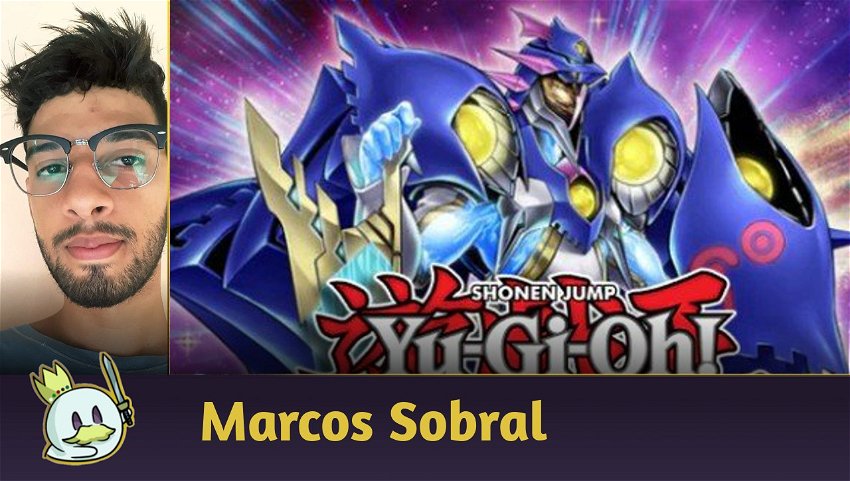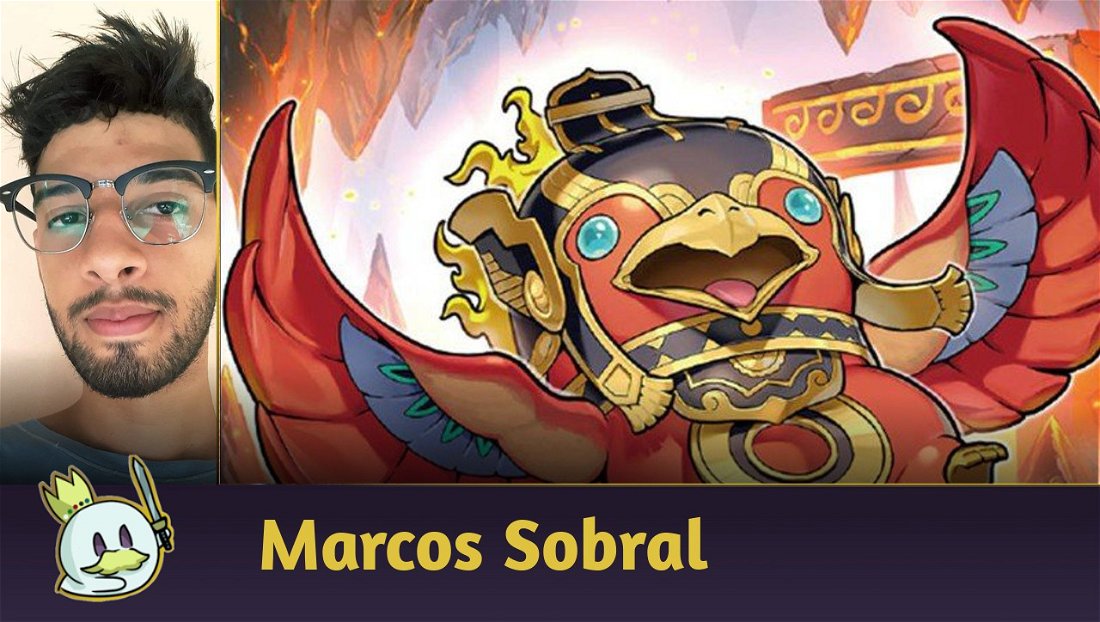Introduction
Battles of Legend: Chapter 1 will be available from February 22nd, 2024 onward. The new Yu-Gi-Oh! TCG set brings reprints of great cards from the following sets: Battles of Legend: Light's Revenge; Battles of Legend: Relentless Revenge; Battles of Legend: Hero's Revenge; and Battles of Legend: Armageddon.
Check out the main cards from Battles of Legend: Chapter 1!
Main Cards from Battles of Legend: Chapter 1

Ad
Number 11: Big Eye and Dark Armed, the Dragon of Annihilation are quite popular in Kashtira, the main "anti-meta" deck in the current format. This deck has interesting mechanics when you're facing the fearsome Fire decks, be it the "pure" Snake-Eye deck or its variant with a higher power ceiling; Fire King Snake-Eye.
Both these cards have simple effects, such as taking control of one of your opponent's monsters (Big Eye), and destroying one of your opponent's cards (Dark Armed), but they also offer versatility to your deck.

Even though it isn't very popular in meta decks nowadays, Black Luster Soldier - Soldier of Chaos is an excellent "boss monster" option, particularly in decks that have one level 7 or higher monster, as then your "Soldier of Chaos" will be able to use its protection effects.


Dealing with towers in Yu-Gi-Oh! TCG may be a difficult task, but, to help you deal with them, we have Kaiju. Their mechanic is simple: you can simply summon a Kaiju from your hand to your opponent's board by tributing a monster on their field.
The logic behind this mechanic is that you'll remove a problematic card from your opponent's board, and summon another monster in its place that doesn't have any interaction effects. Then, it will be easier to win the match.



The Lightsworn reprints will please both nostalgic players (as it is an old archetype), and competitive players: this archetype will soon get interesting support cards that want to bring this deck back to the metagame.
This new package of cards should make this deck's core cards a lot cheaper, considering most of these cards have only been printed once and are considered "lost relics" by the community, something that certainly influences the value of the product itself.

Evilswarm Exciton Knight is another card that is not on the metagame radar, but is quite useful in decks that can easily access xyz class 4 monsters. "Exciton Knight" has an effect that is ideal to break the opponent's board when you go second, and was considered by many a "budget" alternative to Divine Arsenal AA-ZEUS - Sky Thunder.

Number 90: Galaxy-Eyes Photon Lord is another excellent card that needed a reprint to become cheaper. Just like other cards in this list, it probably doesn't have any space in the main decks in this format, but it is a viable option in decks that use engines to access class 8 xyz monsters in the game, such as Horus and P.U.N.K., for instance.
Ad

Borrelsword Dragon was once considered the best finisher in Yu-Gi-Oh! TCG, but it lost space as time went on, and after more powerful cards came along. Despite this, this card is still incredibly interesting, particularly in "budget" strategies, considering it is an excellent replacement for Accesscode Talker.

Yubel is a theme that recently got some support cards, and finally became an archetype that can build a viable deck. As a result, their oldest cards became more expensive in some regions, and this reprint wants to solve this issue.

Denko Sekka is a forgotten staple, but it has its value, considering it is quite useful to deal with decks that play many spell/trap cards to interact with the opponent. Its only "drawback" is that it can only be used in decks that don't depend on "normal summon" to execute their plays.

Quite strong in the current deck, Different Dimension Ground disables entire turns, hits the main meta decks significantly, and the only reason it isn't as popular as it should be is because it also affects the player who played it, so, at the end of the day, there are fewer decks that use it. However, considering it is a normal trap, maybe "DDG" can become a standard in Labrynth deck lists, which can easily access it through their engine.

Salamangreat Almiraj is possibly the most generic link-1 in the game, and has space in most various decks for different reasons.
"Almiraj" is useful to:
> Prevent your opponent from destroying one of your monsters through an effect;
> Put your "normal summon" on the graveyard, if you need that monster to be there to resolve another effect;
> Have a Cyberse type and/or Fire attribute monster on the board to access Decode Talker Heatsoul combos or summon a Hiita the Fire Charmer, Ablaze.

Dinowrestler Pankratops is an excellent boardbreaker option, and is useful to deal with both monsters and a card on your opponent's backrow. Additionally, this card can be used as a level 3 tuner to summon Baronne de Fleur.

To finish this list, we have Fusion Destiny, another card that was once incredibly popular in the meta, but somehow lost space. Its reprint will make the Destiny HERO - Destroyer Phoenix Enforcer engine cheaper. Even though it isn't as popular now that it isn't in the meta, it is still used in a few casual decks, besides HERO, its original archetype.
Final Words
What did you think of these cards from Battles of Legend: Chapter 1? Which ones do you want to get? Tell us in the comment section!
To get further details about the Yu-Gi-Oh! TCG world, keep on browsing our articles.
Cards Realm thanks you for your support!








— Comments0
Be the first to comment